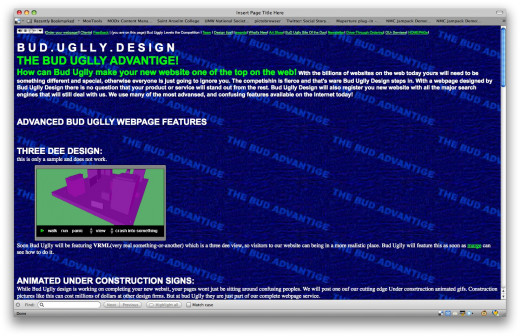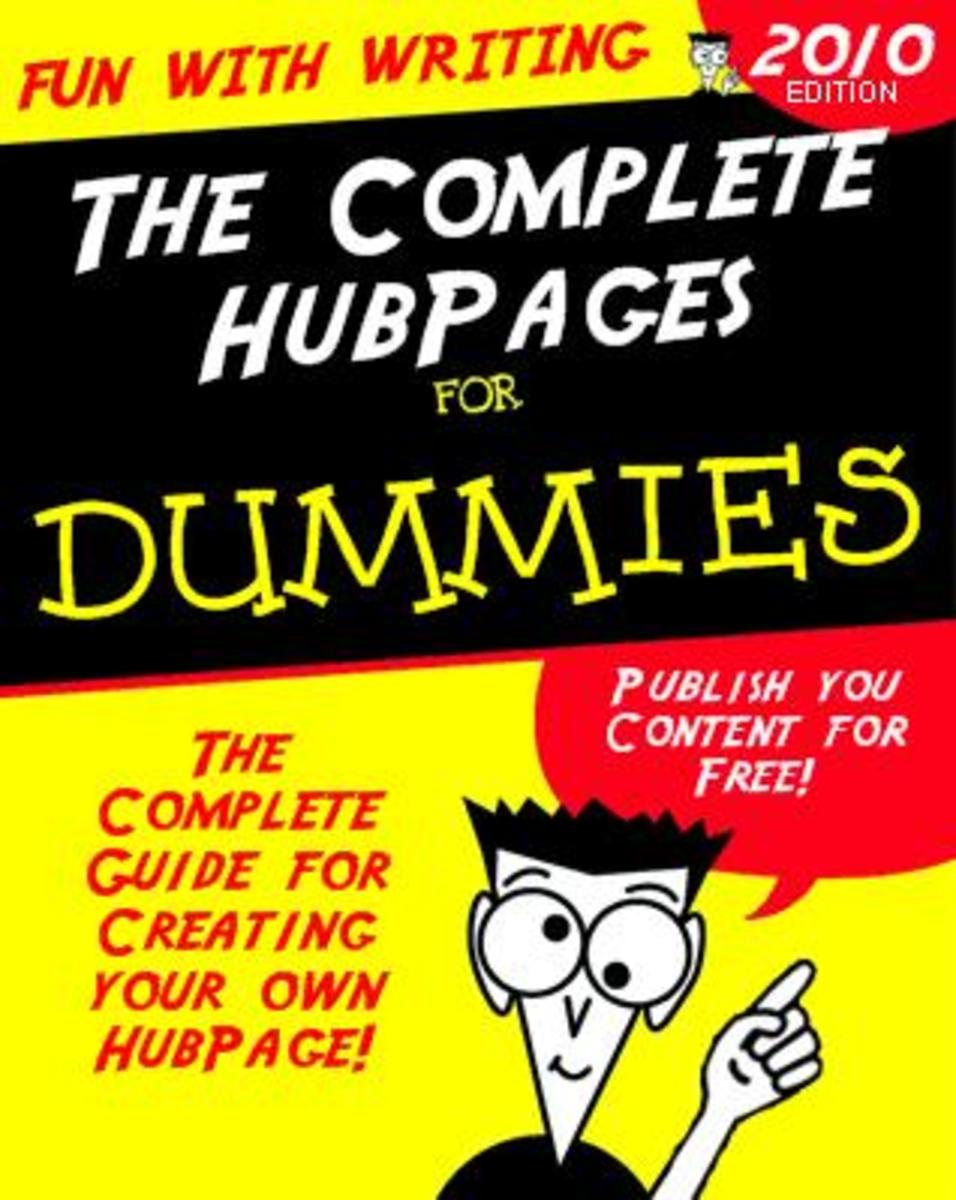Content Creation 101: How to Create Great Content
As Head of Outreach at HubPages, I see a lot of questions about making it big online and creating great content. I have also seen hundreds (if not thousands) of online writing careers both flourish and fail. Over time, I have begun to notice patterns that make it easy to determine whether someone’s online content has a shot at success. As it happens, the factors that lead to success are surprisingly simple.
To create good content, all one must do is create content that is genuine, fresh, well-researched, concise, created with care, and well-supported. No fancy footwork or secret knowledge is needed, though one does (unfortunately or not) have to put in some real work.
Incorporate these practices into your work, and I am sure you’ll see a difference in its reception.
Great Content is Genuine
Online content will not see sustained success if it is not genuine. One of the key differences between user-generated content and content created by paid professionals is that user-generated content is created by impassioned volunteers. While a paid author (writing for a large, branded publication) might be able to slip by writing things he does not care much about, a volunteer online content generator (basically all us normal folk) won’t be able to gain sustained traction if we aren’t earnest about our work.
If you are writing online content to boost SEO for another site, or to drive traffic to an online store, or to encourage clicks on online ads, you will not see sustainable success.
Yes, there are people who see success (in the form of high traffic volumes) when writing thin, disingenuous, search engine-optimized online content, but such success is almost always short-lived. Before long, Google’s search algorithm team will find a way to bury that content, and because it was never truly good or compelling in the first place, there will never be a strong reader base to visit it as a destination.
What's your motivation?
I mostly create online content because I want to...
Before creating any online content, be it a blog post, article, video, forum post, podcast, or something else entirely, ask yourself: “Why am I making this?”
If your answer is:
- Because I want to share my expertise/creativity/opinion with the world
- Because I want to share something with friends and family
- Because I want to express myself
- Because I want to develop an online career
- Because I want to develop an online portfolio of work
- Because I want to make money by doing good work
You’re on the right track.
If, however, your answer is:
- Because I want to drive traffic to my personal website or online store
- Because I want to drive traffic to online ads on my site
- Because I want to make money as quickly and easily as possible
You need to reconsider your approach and motives.

Great Content is Fresh
There are several meanings to the term ‘fresh’ in this context.
Online content should be fresh in the sense that it is not already covered extensively online. I cannot tell you how many times I have seen people publish articles about losing belly fat. Each and every person who does this (lest they be famous celebrities) is wasting their time, as their content is not at all likely to stand apart from the thousands (well, really more like millions) of pieces of online content that already address the issue.
If you want to create a humorous spoof on losing belly fat that is original and creative, or you want to write an article on how to gain belly fat, you might have a shot. Just don’t bother trying to make a name for yourself by doing something that has been done countless times before. It’s like showing up in Times Square and saying “BEHOLD! I HAVE INVENTED THE WHEEL!” and trying to sell it to passersby. It’s too little too late.
Another necessary element of content freshness is utility and entertainment value. As harsh as it might sound, nobody actually cares about how mean your mother-in-law is. If you are not a famous celebrity, people will not want to read purely personal accounts (unless they’re reallygood, and chances are, they’re not good enough to compete with those of other non-famous personal essayists and bloggers).

Non-fresh often consists of:
- Personal accounts of everyday life
- Political opinion
- Religious content
- Poetry or fiction presented out of context
Fresh, successful content tends to be more:
- Surprising
- Useful
- Funny
- Controversial
- Instructive
A final dimension of freshness in online content involves proper placement on the cutting edge. Online articles and videos covering nascent technologies, trends, styles, humor, politics, or lifestyles have a shot at going viral and gaining a first-mover advantage. By keeping your finger on the pulse of all that is new, you can increase your chances of discovering a development that has yet to break into mainstream consciousness. Cover it well, and you may very well receive a flood of new followers and fans.

Research Checklist
- Have I made a point of including real, concrete names, studies, stats, facts, dates, places, and events?
- Am I drawing information from original sources (and not secondary / tertiary sources)?
- Am I referencing sources in my content?
- Have I looked into common keywords related to this subject?
- Have I considered my target audiences and what they would want from content on this subject?
Great Content is Well-Researched
I mentioned above that monitoring emerging trends may help you create online content with a higher potential of going viral, but trendwatching is just one of many types of research you should conduct to create quality online content.
It should go without saying that anything you write should be thoroughly researched (and should link to, or at least mention, sources). That said, an alarming preponderance of online content generators neglect to do this. Go the extra mile and your work will stand apart from the crowd.
One (very important) aspect of online content research that is not simple common sense involves keyword research. Keyword research entails getting an understanding of the most common terms people type into search engines when conducting queries about your content’s topic. Keyword research is most commonly conducted using the Google AdWords Keyword Tool, however if you would prefer to keep things exceedingly simple, just make a point of creating titles that reflect terms you might use when typing searches into Google’s Search bar.
Technical details aside, one would be remiss to create online content without considering one’s angle and audience. Before composing an online article, post, or video, consider the audience you wish to reach and what they might want from content on the subject you wish to cover.
Great Content is Concise
Online readers and viewers have notoriously short attention spans. Don’t lose them with rambling introductions and unnecessary tangents.
Start on the right foot with a short, descriptive, and catchy titles. A title should be short because anything longer than 65 characters will be truncated in search engine results. A title should be catchy to compete with other search engine results (or articles and videos shared in a feed), but descriptive enough to make it very clear what the content addresses.
Content itself should hook readers right away. Avoid introductions entirely if at all possible. There is no need for formalities on the Internet! To keep readers with you, make your content easy to skip around (this applies more to articles and blog posts than videos). Go for subheaders, lists, and summaries and avoid uninterrupted walls of text like the plague.
In addition to being free of verbal embellishments, it also pays to keep content free of visual embellishments. Keep web design clean. Don’t use crazy fonts or distracting backgrounds. Utilize great images and graphics, but only those that are relevant. A decorated page is simply showing signs of a content creator who hasn’t devoted a sufficient amount of time to simply creating good content.

Content Creation Checklist
- Have you edited it?
- Is it genuine, fresh, well-researched, and concise?
- Does it have at least one, beautiful, high-resolution image?
- Does it have a custom summary for search results?
- Have you edited it again?
Great Content is Created with Care
Readers aren’t the only online online citizens to suffer from impatience and an inability to focus. We speedily create online content just as we speedily consume it. Try to avoid the temptation to rush through the content generation process and make a point of creating work in a leisurely (but still consistent and systematic) manner. Edit your work before publishing it. Maybe even have someone else take a look at your work before sharing it with the world. This kind of attention to detail pays off in the long run.
With the rise of social networks that emphasize beautiful images, it is more important than ever to also focus on the aesthetics of whatever content you create. When uploading videos, make a point of choosing an attractive, alluring thumbnail. When creating blog posts and online articles, break up and reinforce your work with relevant, attractive, legally-used (and ideally original) images and graphics.
Content that has polish and style, that offers an enjoyable reading experience, is far more likely to climb in search engine results, be shared by visitors, and gain traction on social networks.

Great Content is Well-Supported
After it has been published, online content should not be left alone to sink or swim. It is far more likely to succeed if given continued attention and support. In addition to being shared (with a small, interested set of followers on a relevant social network- IN MODERATION), content you create should be regularly edited, updated, strengthened, and improved over time.
In addition to improving its overall quality, continued care for online content boosts its attractiveness to many search algorithms, who give precedence to freshness.
Worth the Effort
Crafting genuine, fresh, well-researched, concise, carefully composed, and well-supported content does take a lot of effort, but as content generators (as opposed to those who create videos and articles professionally and for an income) are intrinsically motivated, passionate people, doing these things should hardly feel like work. Trust me and go the extra mile. You’ll be glad you did.








